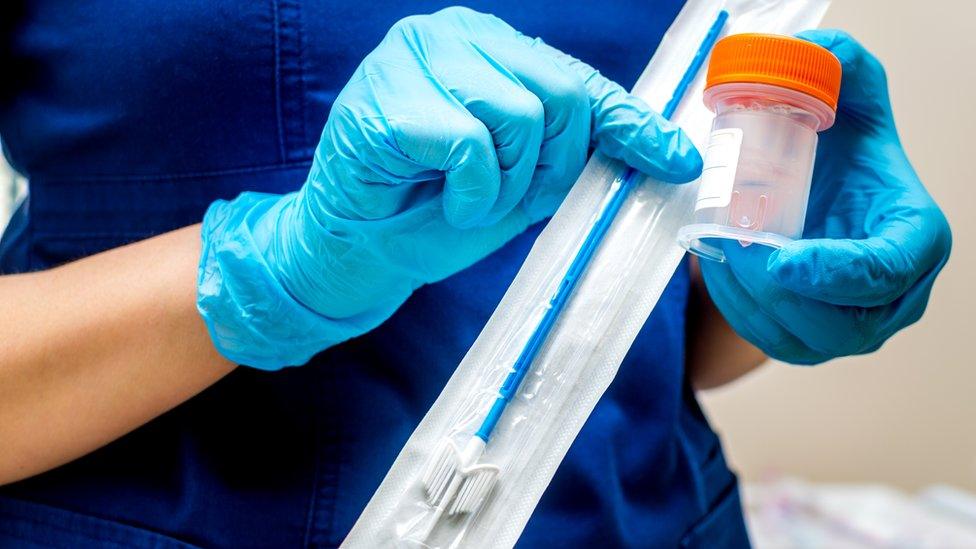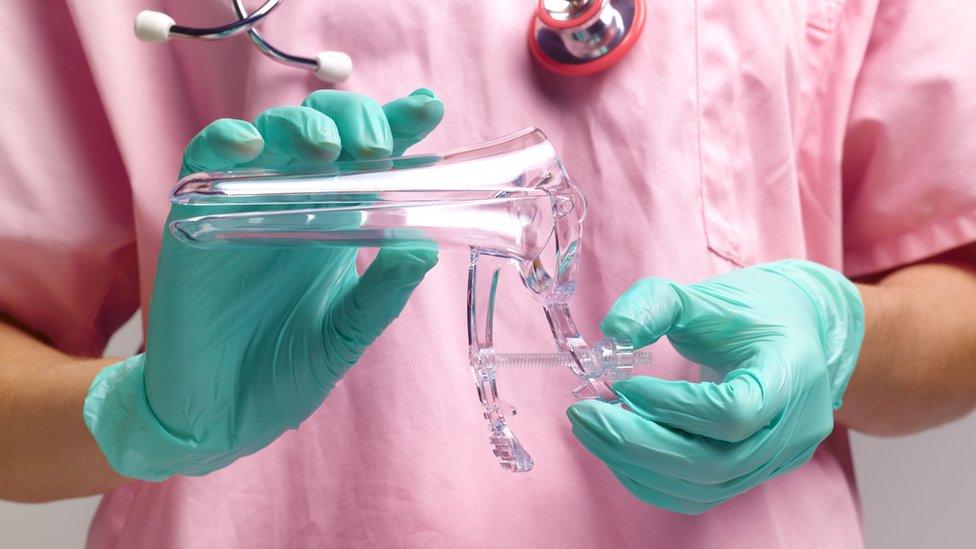Cervical cancer: Northern Ireland adopts new HPV screening programme
- Published

A new improved primary HPV cervical screening programme is being rolled out across Northern Ireland.
It checks for an infection called HPV - the cause of most cervical cancers.
Presence of the infection is the earliest sign that a woman may be at risk and is therefore better for indicating if treatment is required.
Dr Joanne McClean, director of public health at the Public Health Agency (PHA), described the move as a "significant milestone".
She said the screening programme would "increase ability to detect early cell changes that could lead to cancer".
From Monday, the most significant difference is that all smear tests will now be checked for the high-risk types of HPV in the first instance.
If the virus is found to be present, the sample will then go for further examination.
This removes the need for all samples to also undergo cytology which is time consuming and clogs up the screening system.

What is HPV?
Almost all cases of cervical cancer are caused by a virus called human papillomavirus (HPV).
It is common, with about eight out of 10 people catching it at some time in their lives.
It is mainly spread by skin-to skin contact during sexual activity.
HPV in the cervix happens through sexual contact.
Only certain types of HPV can cause cervical cancer and are known as high-risk-types.
In a small number of cases, HPV in the cervix can develop into a persistent infection.
Persistent infection with high-risk HPV can cause the cells in your cervix to change - these changes can develop into cancer.
Signs and symptoms of HPV include:
Vaginal bleeding after sex, between periods or after the menopause
Vaginal discharge that is not normal
Persistent back or tummy pains
Pain during sex

Dr McClean said this was a "more agile and focussed model" which would allow results be to delivered for most women more quickly.
Before this test was available, labs could only look for suspicious cells in smear samples that suggest cancer may already be present or could develop.
Having HPV infection comes before abnormal cells start to develop.
Screening is not a test for cancer - it is a test to help prevent cancer.
What happens during a smear test?
The PHA said it is confident this method of testing will help drive down rates of cervical cancer in NI further, along with the ongoing delivery of the HPV vaccination programme.
HPV testing has been in place in England, Scotland, Wales, and the Republic of Ireland for several years.
Northern Ireland is late implementing the system due to budget restraints.
The PHA said it was important that women attend for cervical screening when invited.

Analysis
While this is a positive move it is worth noting the HPV rollout in Northern Ireland is late.
Where women in the rest of the UK and the Republic of Ireland have been able to avail of it since at least 2019 - women in NI have been denied it.
Once again it highlights another women's health service that's not operating on full par with counterparts elsewhere.
It's also hoped this new system will help address a six-month wait for results of cervical smear tests across all of the health trusts.
In September BBC News NI revealed that more than 7,000 women were waiting three to six months for results.
The ongoing cervical smear recall in the southern health trust also highlights how the service hasn't been working as efficiently as it should be.

HPV testing was already in place in NI as part of an interim model introduced in March 2023 to address a backlog .
Martin Hunt, chief executive at Jo's Cervical Cancer Trust, described the move as "brilliant."
Mr Hunt said the more sensitive and effective test would help identify those at a high-risk from an early stage and would prevent more cervical cancers and save lives.
Wales and Scotland have moved to the five-yearly screening offer, while England and Northern Ireland continue to send invites to women every three years.
Related topics
- Published4 November 2021

- Published9 October 2023

- Published13 February 2023
